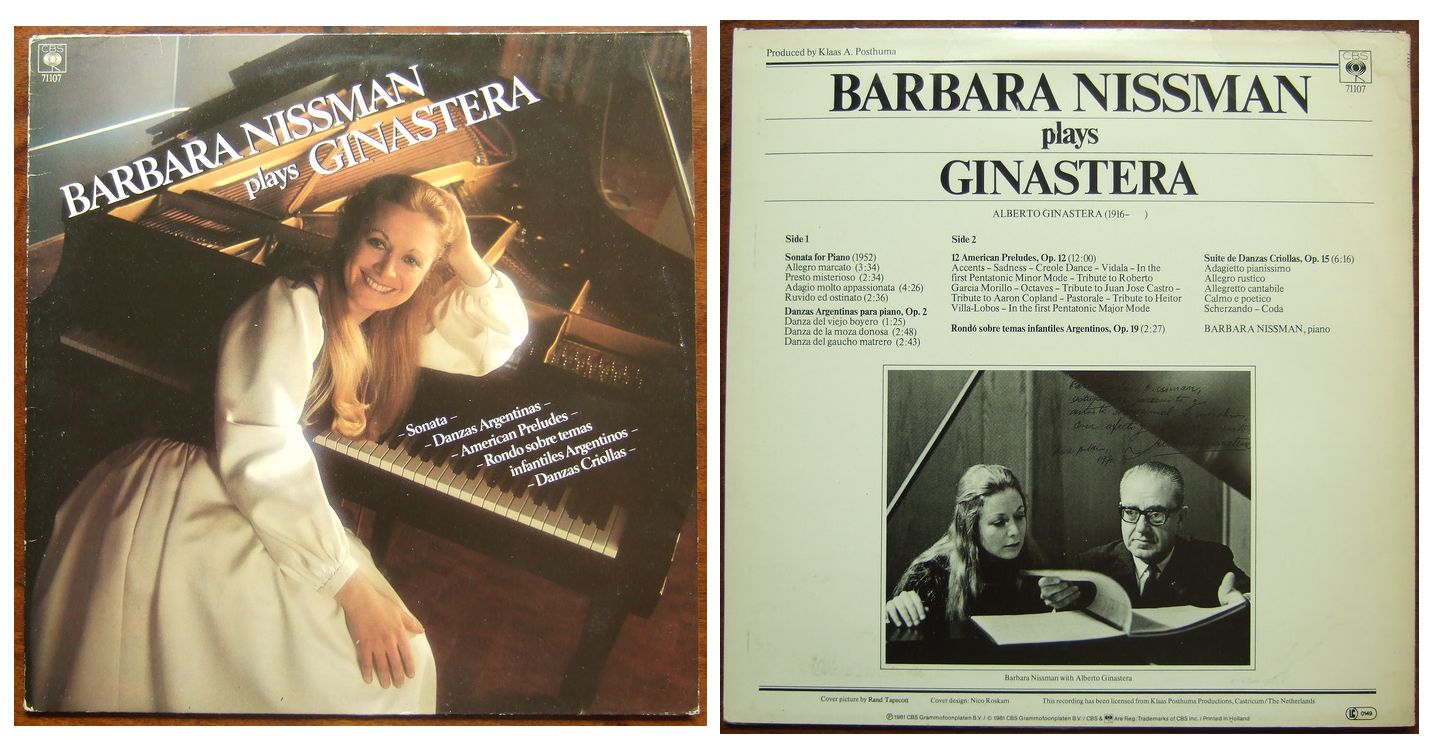

|
Barbara Nissman is best known for her performances of the piano music of Sergey Prokofiev and Alberto Ginastera. She has written extensively about Prokofiev's works, conducted master classes and given lectures on them, and in 1989, was the first to perform a complete cycle of the sonatas in a three-recital series in both New York and London. Nissman has also lavished attention on Ginastera, who dedicated his final work, the Third Piano Sonata, to her. Nissman has also performed works by Liszt, Rachmaninov, Bartók, Beethoven, Brahms, Mozart, and many others. She has concertized throughout the Americas, Europe, Asia, and New Zealand, and appeared as soloist with the major orchestras of New York, Philadelphia, Chicago, Cleveland, with many leading European orchestras, and with several major conductors, including Ormandy, Muti, Skrowaczewski, and Slatkin. Nissman was host of a 16-week BBC television series entitled Barbara and Friends, which also appeared on American public television stations. She has made numerous recordings, most of them originally issued on the Pierian label and reissued on Nissman’s own label, Three Oranges Recordings. Born in Philadelphia, PA, on December 31, 1944, she studied music at the University of Michigan and with György Sándor. Nissman met Ginastera in 1971 when she was performing his First Piano Concerto at UM's contemporary music festival. That year she also went on a Eugene Ormandy-sponsored concert tour of Europe, and then debuted with the Philadelphia Orchestra under Thor Johnson in Ann Arbor, MI, with the Rachmaninov Paganini Rhapsody. She then appeared with Ormandy and toured with the Orchestra the following season. In 1976, at the invitation of Ginastera, Nissman performed his First Piano Concerto with L'orchestre de la Suisse Romande at his 60th birthday celebrations in Geneva. She would soon turn to Prokofiev, a composer whose music she knew from her student years. From the 1980s, she has been among his most ardent advocates. In 1988 she recorded all the sonatas and other piano works for Newport Classic, which issued the recordings in 1989 to general acclaim. During the 1991-1992 season, in celebration of the 100th anniversary of Prokofiev's birth, Nissman again performed cycles of the composer's sonatas throughout the U.S. and Europe. In 1998, she was invited to present recitals and master classes on Prokofiev by both the Moscow and St. Petersburg conservatories, and in 2015, she was the featured performer at the dedication of the Prokofiev Archive at Columbia University with members of the Prokofiev family in attendance.
-- Biography adapted from a posted version
by Rovi Staff
-- Names which are links refer to my interviews
elsewhere on my website. BD
|
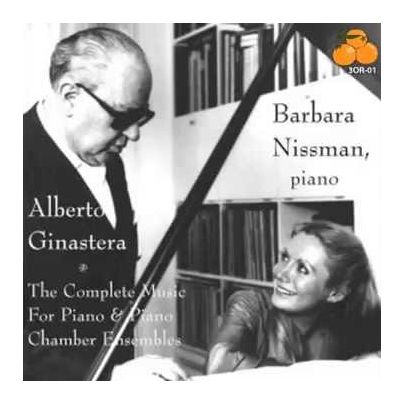 Some performing artists are particularly associated with one or two
composers, and despite her broad range of repertoire, Barbara Nissman will
always be thought of in terms of Prokofiev and Ginastera. Not only
has she played their works publicly numerous times, she has also recorded
them more than once!
Some performing artists are particularly associated with one or two
composers, and despite her broad range of repertoire, Barbara Nissman will
always be thought of in terms of Prokofiev and Ginastera. Not only
has she played their works publicly numerous times, she has also recorded
them more than once!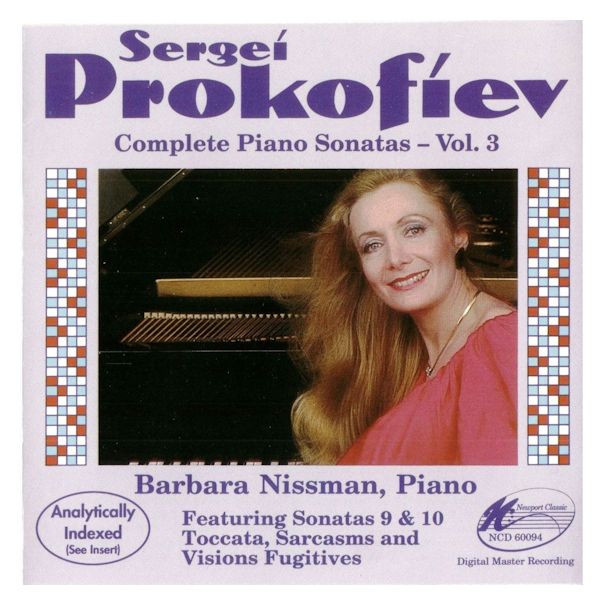 Nissman: I was always drawn to his writing. Even from
my student days I felt that his solo piano music was his best, and that
even accounts for his piano concertos, because this is his natural instrument.
He is at one with the piano, and he takes more risks with the piano
solo than he can possibly do with a piano in another medium. So
by doing this project, it only reconfirmed what I felt all along
— that he is a continuum of the Liszt tradition,
and has not forgotten his nineteenth century roots
— yet he’s built upon that with a personal language of his own.
It’s uniquely his own, and he truly went his own way. I guess that’s
really the problem the avant-garde camp has with Prokofiev, and also
the conservative camp. He truly is his own man and doesn’t fit into
any category. But what was interesting in doing this whole succession
of sonatas is I’ve seen how the early ones built up to the three ‘War
Sonatas’ (#6, #7, #8), and then of course the Ninth
Sonata is the distillation of his style. There he returns to that
childlike innocence. He comes full-circle, and he sheds all the peripheral
things, and you have such a direct, lyrical, innocent statement. The
Fifth Sonata is a magnificent work, but yet the ‘black sheep’ of
all of them. I was amazed because until I started working on this
project, I didn’t really know there was the earlier version, because most
pianists, if they’re playing it, play the later version. When you
go back to the earlier version, you see that he wasn’t happy with it either.
This was the work that clearly, more than anything else, shows he was looking
over his shoulder at Stravinsky, and it just didn’t work. There’s no
way Prokofiev could have written the way Stravinsky wrote for the keyboard...
and thank goodness! Luckily, he discarded that type of thought. It
turned into a stylistic detour, and then he got over it and wrote those
three War Sonatas.
Nissman: I was always drawn to his writing. Even from
my student days I felt that his solo piano music was his best, and that
even accounts for his piano concertos, because this is his natural instrument.
He is at one with the piano, and he takes more risks with the piano
solo than he can possibly do with a piano in another medium. So
by doing this project, it only reconfirmed what I felt all along
— that he is a continuum of the Liszt tradition,
and has not forgotten his nineteenth century roots
— yet he’s built upon that with a personal language of his own.
It’s uniquely his own, and he truly went his own way. I guess that’s
really the problem the avant-garde camp has with Prokofiev, and also
the conservative camp. He truly is his own man and doesn’t fit into
any category. But what was interesting in doing this whole succession
of sonatas is I’ve seen how the early ones built up to the three ‘War
Sonatas’ (#6, #7, #8), and then of course the Ninth
Sonata is the distillation of his style. There he returns to that
childlike innocence. He comes full-circle, and he sheds all the peripheral
things, and you have such a direct, lyrical, innocent statement. The
Fifth Sonata is a magnificent work, but yet the ‘black sheep’ of
all of them. I was amazed because until I started working on this
project, I didn’t really know there was the earlier version, because most
pianists, if they’re playing it, play the later version. When you
go back to the earlier version, you see that he wasn’t happy with it either.
This was the work that clearly, more than anything else, shows he was looking
over his shoulder at Stravinsky, and it just didn’t work. There’s no
way Prokofiev could have written the way Stravinsky wrote for the keyboard...
and thank goodness! Luckily, he discarded that type of thought. It
turned into a stylistic detour, and then he got over it and wrote those
three War Sonatas. 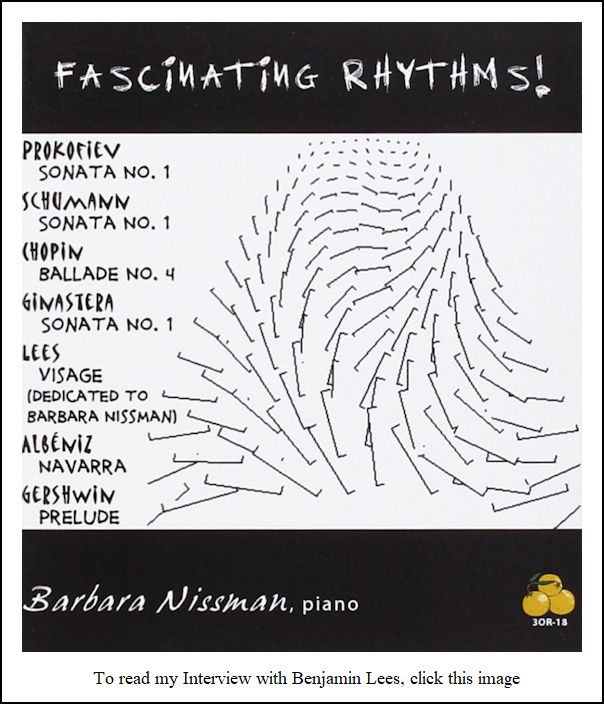 BD: If you’re doing three concerts, how do you arrange
them?
BD: If you’re doing three concerts, how do you arrange
them? 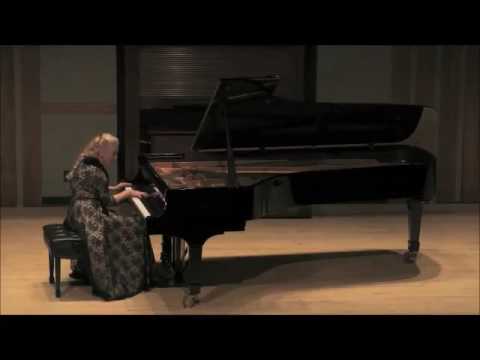 BD: Will you play the Mozart on the standard piano?
BD: Will you play the Mozart on the standard piano?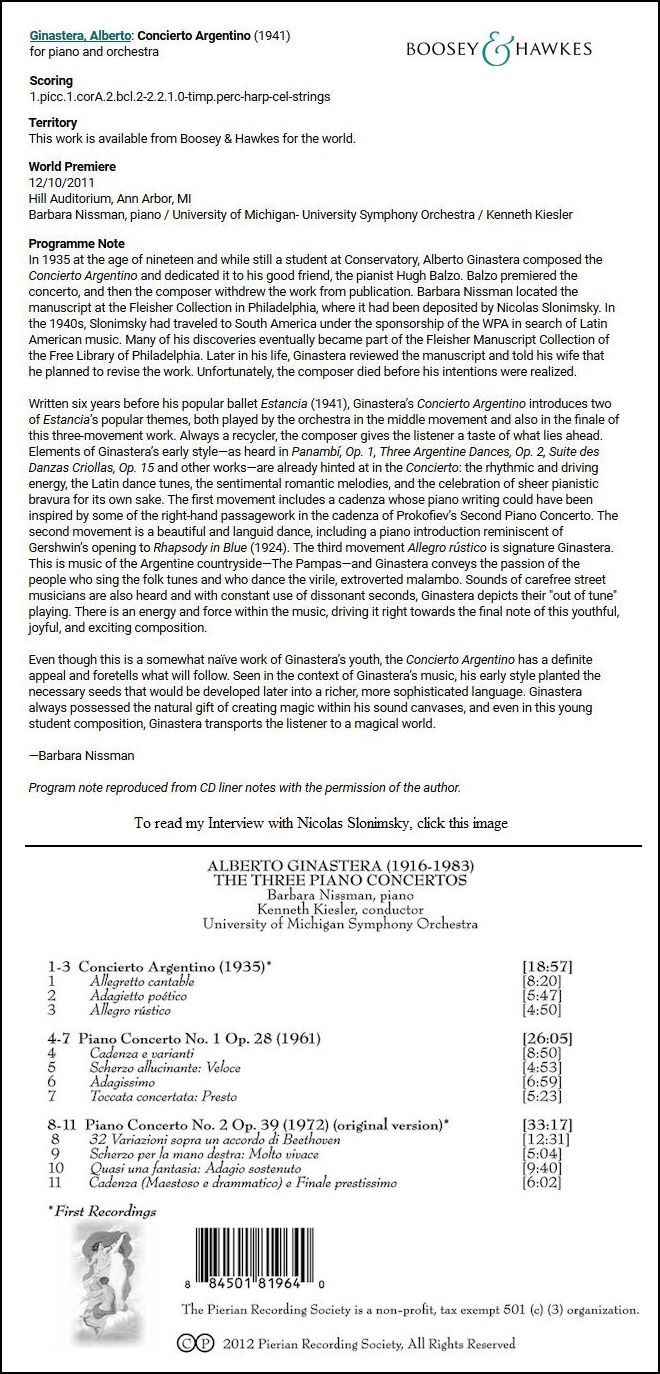 Nissman: I met him when I was a student
way back in 1971. He came for the first contemporary music festival
at the University of Michigan. That was the first performance
I was giving of his Piano Concerto with the University orchestra.
That’s really the basis of our friendship. I had studied his Piano
Sonata, as every piano student in most universities does, because
it’s now become standard twentieth-century repertoire. It’s very
well written, and out of all the piano sonatas, it really is probably his
masterpiece. I played the Sonata for him before I was going
off to Europe to start my first European tour, and to make my debuts in
the European season. I included that on the program, and he was always
so gracious. He liked the performances, and then several years later
I received a call when I was based in Holland. It was his sixtieth
birthday, and the Suisse Romande was going to give a gala birthday concert,
and he wanted me to do the Piano Concerto, which was terrific.
Since that time, I’ve performed it many, many times, and at that time
he also made me a promise to write me a piano concerto, which, unfortunately
because of his ill-health at the end of his life, and because he was always
late with commissions, became the Third Piano Sonata
— a very short one — which turned out to
be the last piece he ever wrote. We spoke about it a little bit, but
that’s the way we did the editing — by transatlantic
telephone!
Nissman: I met him when I was a student
way back in 1971. He came for the first contemporary music festival
at the University of Michigan. That was the first performance
I was giving of his Piano Concerto with the University orchestra.
That’s really the basis of our friendship. I had studied his Piano
Sonata, as every piano student in most universities does, because
it’s now become standard twentieth-century repertoire. It’s very
well written, and out of all the piano sonatas, it really is probably his
masterpiece. I played the Sonata for him before I was going
off to Europe to start my first European tour, and to make my debuts in
the European season. I included that on the program, and he was always
so gracious. He liked the performances, and then several years later
I received a call when I was based in Holland. It was his sixtieth
birthday, and the Suisse Romande was going to give a gala birthday concert,
and he wanted me to do the Piano Concerto, which was terrific.
Since that time, I’ve performed it many, many times, and at that time
he also made me a promise to write me a piano concerto, which, unfortunately
because of his ill-health at the end of his life, and because he was always
late with commissions, became the Third Piano Sonata
— a very short one — which turned out to
be the last piece he ever wrote. We spoke about it a little bit, but
that’s the way we did the editing — by transatlantic
telephone! 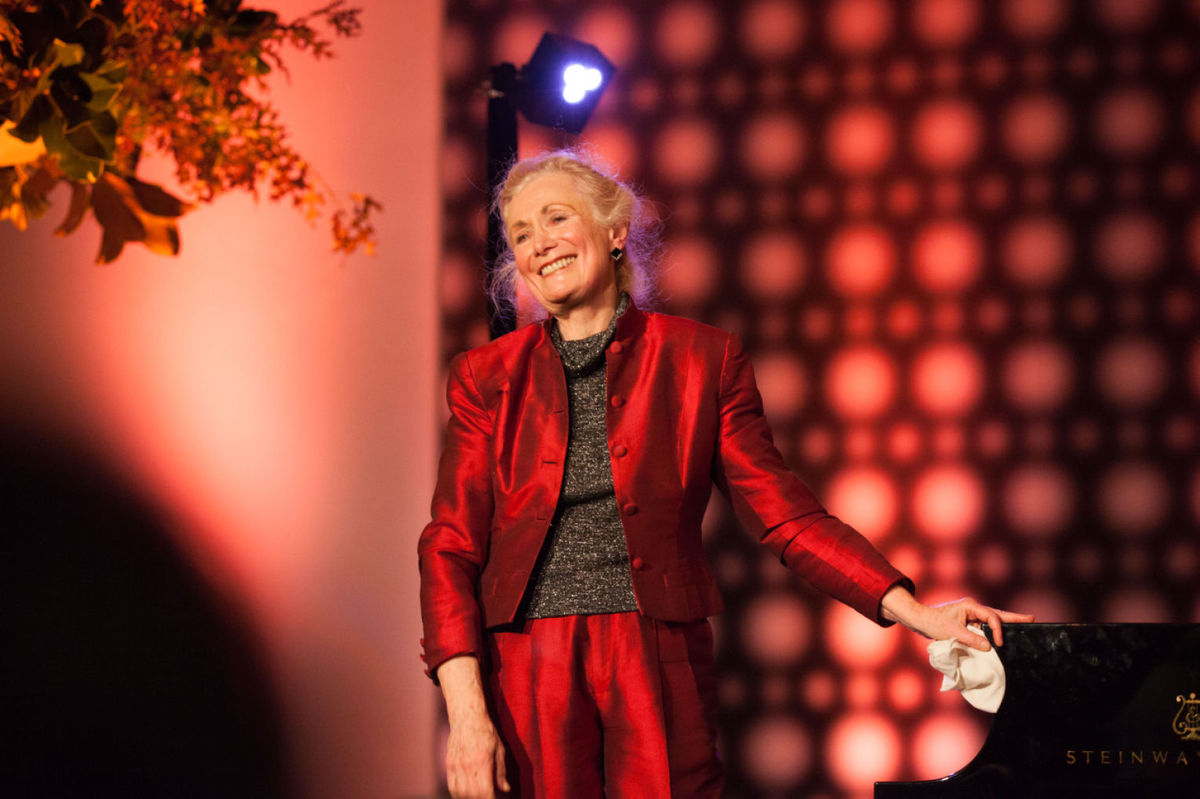
© 1990 Bruce Duffie
This conversation was recorded in Chicago on October 12, 1990. Portions were broadcast on WNIB a couple of weeks later, and again in 1994 and 2000. This transcription was made in 2017, and posted on this website at that time. My thanks to British soprano Una Barry for her help in preparing this website presentation.
To see a full list (with links) of interviews which have been transcribed and posted on this website, click here.
Award - winning broadcaster Bruce Duffie was with WNIB, Classical 97 in Chicago from 1975 until its final moment as a classical station in February of 2001. His interviews have also appeared in various magazines and journals since 1980, and he now continues his broadcast series on WNUR-FM.
You are invited to visit his website for more information about his work, including selected transcripts of other interviews, plus a full list of his guests. He would also like to call your attention to the photos and information about his grandfather, who was a pioneer in the automotive field more than a century ago. You may also send him E-Mail with comments, questions and suggestions.